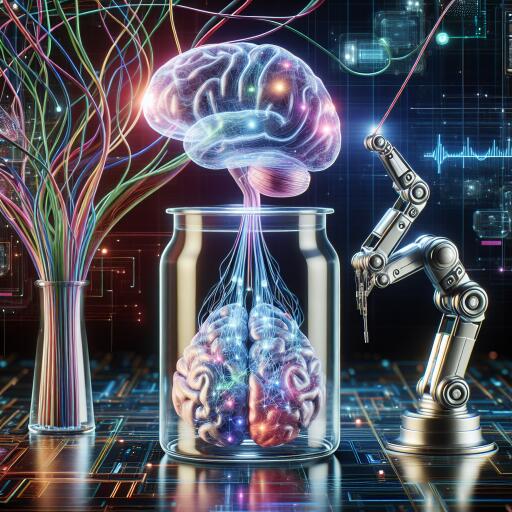Revolutionizing Robotics and Biocomputing with ‘Brain-In-A-Jar’ Technology
The realm of biocomputing is entering an unprecedented phase with a groundbreaking development: living brain cells are now being harnessed to operate robots. This leap in technology is made possible through MetaBOC, an open-source, intelligent interaction system. This initiative propels us into a future where human brain cells are transplanted into artificial bodies, establishing a novel chapter in the evolution of biocomputing.
In an impressive feat, researchers have discovered a method to cultivate human brain cells on silicon chips. This is based on the remarkable compatibility between neuronal communication, which is inherently electrical, and digital computing languages. These neurons are capable of receiving, processing, and responding to electrical signals, facilitating their ability to learn and adapt over time.
The pioneering work in this field was demonstrated through the DishBrain project at Monash University, Australia. Here, approximately 800,000 brain cells on a chip showed the capability to learn how to play Pong within a mere five-minute timeframe, an initiative funded by the Australian military. This breakthrough led to the establishment of Cortical Labs, a venture aiming to bring to market the application of hybrid learning intelligence rooted in human brain cells.
Building on this momentum, the MetaBOC project emerged from collaborative efforts between researchers at Tianjin University’s Haihe Laboratory of Brain-Computer Interaction and Human-Computer Integration and their colleagues at the Southern University of Science and Technology. The MetaBOC system is an open-source software crafted to seamlessly integrate brain-on-a-chip biocomputers with electronic gadgets, paving the way for brain organoids to sense their surroundings, manage controls, and learn complex tasks – from maneuvering robots to handling objects.
The technology employs ball-shaped organoids that mimic the structure of natural brains, enriched with intricate neural networks. These organoids are nurtured using low-intensity focused ultrasound stimulation, bolstering their initial intelligence capabilities. The MetaBOC system stands as a testament to the advanced levels of intellect these brain organoids can achieve, allowing them to effectively navigate and manipulate their environment.
The integration of this technology into robotics opens a plethora of potential applications. The researchers from Tianjin University see robotics as a pivotal area for the application of brain-on-a-chip technology, envisioning organoids that are capable of driving robotic units, circumventing obstacles, and executing sophisticated tasks. While the sight of robots under the control of brain cells might strike one as the fodder of science fiction, the foundation of this technology is deeply grounded in serious scientific application.
Nevertheless, this rapid advancement raises complex ethical questions. Brett Kagan, the Chief Scientific Officer at Cortical Labs, deliberates, “Let’s say that these systems do develop consciousness – very unlikely, but let’s say it does happen. Then it would be best if you decided whether it is ethically right to test with them or not?” These ponderings underscore the broader ethical considerations that accompany the push of scientific innovation towards the cusp of understanding and manipulating both biological and artificial intelligence.
As we stand on the brink of a new era with projects like MetaBOC, along with initiatives such as Neuralink aiming to forge high-bandwidth brain-computer interfaces, and the exponential growth of the AI industry, we are witnessing a transformative period in science and technology. The intersection of biological and artificial intelligence not only marks a significant milestone but also presents both unparalleled challenges and opportunities as we inch closer to the technological singularity—a future where AI could surpass human intelligence and herald an era of accelerated innovation.
By 2024, the fusion of biology and technology is anticipated to transition from the realm of science fiction into tangible reality. This advent promises to redefine our comprehension of life, consciousness, and the potential of technology, ushering in an era filled with promise and myriad possibilities.









